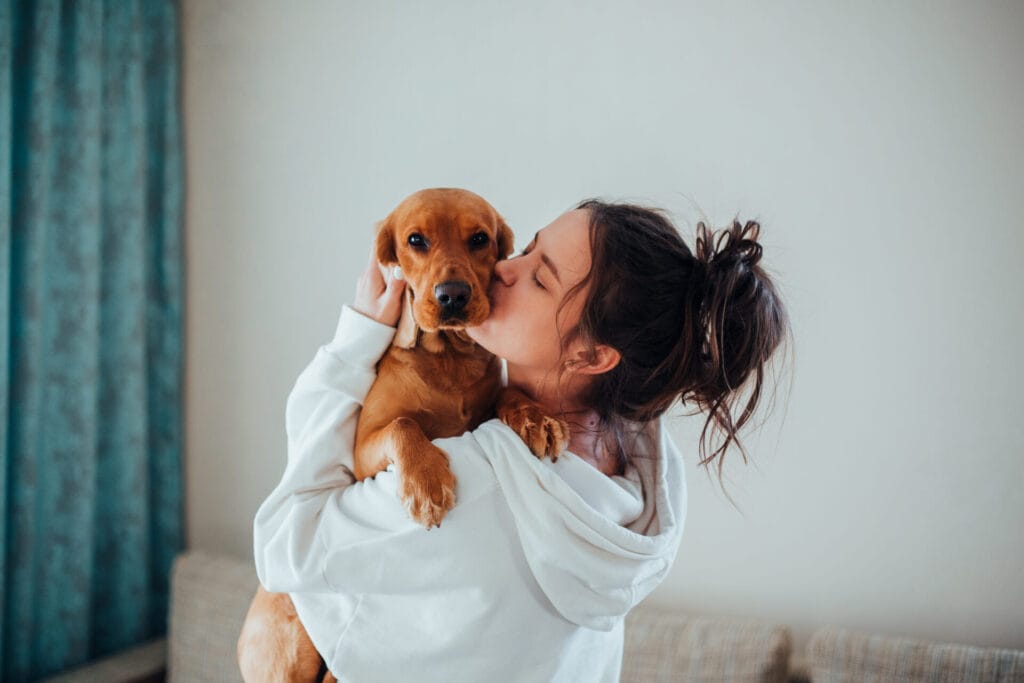Some dogs love being held, but others feel stressed or uncomfortable when lifted. Dogs communicate these feelings through body language. By noticing your dog doesn’t like being picked up, you can avoid uncomfortable (or even dangerous) situations. Here are the top 10 signs to look out for:
10. Attempting to Squirm or Escape
If your dog tries to squirm, wriggle, or push away in your arms, it’s a sign they’re uncomfortable. Dogs instinctively want to escape situations where they feel confined or anxious. This behavior shows they’d be happier on solid ground.
9. Tensing Up
When your dog’s body stiffens or tenses as you lift them, it indicates anxiety. Stiffening is a subtle but important signal that your dog doesn’t feel secure in the situation, so putting them down can help them feel at ease.
8. Whining or Whimpering
If your dog whines or whimpers when you pick them up, they’re vocalizing discomfort or even mild fear. Dogs often use vocal signals to express distress, so this is a clear message that they’re not enjoying the experience.
7. Growling or Snarling
Growling is a warning that your dog feels threatened or unhappy about being picked up. Ignoring a growl could damage their trust in you, so listen to this signal and allow your dog the space they need.
6. Avoiding Eye Contact or Turning Away
When your dog avoids eye contact or turns its head as you approach to lift them, they’re showing discomfort. Dogs that turn away or avoid looking at you may feel uneasy, and this behavior suggests they would rather stay where they are.
5. Freezing or Becoming Very Still
A sudden freeze or stiffness signals that your dog is feeling fearful or uncertain. Freezing is a stress response that dogs use to manage uncomfortable situations, so if you notice this, place them down gently to ease their anxiety.

4. Tail Tucking
A tucked tail is a common sign of fear or anxiety. If your dog tucks its tail between its legs as you lift it, they’re feeling vulnerable and uncomfortable. The tail tuck is a natural reaction to feeling threatened, so gently put your dog down if you see this.
3. Hiding or Moving Away
If your dog moves away or hides when you reach to pick them up, they’re showing a clear desire to avoid the experience. Dogs use distance to express discomfort, and this behavior suggests they’d prefer not to be held.
2. Heavy Panting or Pacing Afterward
Panting or pacing after being lifted can indicate stress. Dogs pant to calm themselves after uncomfortable situations, so if you notice this behavior after picking them up, it’s best to let them stay on the ground next time.
1. Licking Lips or Yawning
If your dog starts licking its lips or yawning when you try to lift them, these are signs of stress. It’s possible your dog doesn’t like being picked up. Subtle but significant, these behaviors show that your dog feels nervous, so respecting their space will help them feel safe and secure. You can also explore adding calming supplements to your dog’s daily routine.
Conclusion
By recognizing these signs your dog doesn’t like being picked up, you can respect your dog’s boundaries and keep them feeling calm and comfortable. Every dog has their own preferences, and understanding these signs of discomfort will strengthen the bond of trust between you and your pet.



















